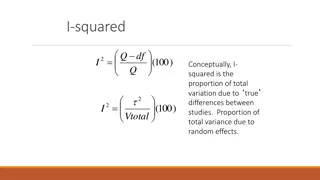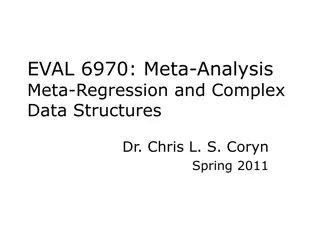
Job Scheduling in Parallel Machine Environment
Learn about job scheduling in a parallel machine environment where jobs need to fit within a time window. Explore concepts like assignment problems, maximizing processed jobs, and feasibility in reservation systems without slack.
Download Presentation

Please find below an Image/Link to download the presentation.
The content on the website is provided AS IS for your information and personal use only. It may not be sold, licensed, or shared on other websites without obtaining consent from the author. If you encounter any issues during the download, it is possible that the publisher has removed the file from their server.
You are allowed to download the files provided on this website for personal or commercial use, subject to the condition that they are used lawfully. All files are the property of their respective owners.
The content on the website is provided AS IS for your information and personal use only. It may not be sold, licensed, or shared on other websites without obtaining consent from the author.
E N D
Presentation Transcript
Reservation Systems Parallel machine environment with n jobs and m machines The processing time of the job has to fit within a time window and there may or may not be slack In an assignment problem there is no time window concept and typically there are equal jobs and machines and the objective is to assign in such as way that the makespan is minimized. The time window is specified by the release date rjand due date dj It may be the case that all n jobs cannot be processed and the scheduler has to decide which jobs to process. Obj fnc maximize number of jobs processed or minimize the total amount of processing time Examples: Factories must decide which orders to accept and which one to reject, likewise hotel room and car rental reservations 1
Reservation Systems without slack (feasibility problem) No slack pj= dj rj It may be the case that job j cannot be processed on any one of the m machines but can be processed only on a subset of Mj machines. Let wj be the weight (profit from a job j) then the obj fnc is to maximize the weighted number of jobs In general, if the job is machine dependent then the weight is wij where i is the machine index If there are H-time periods Max ?=1 ?????? ?=1 ? ?=1 ? ???? 1 ? = 1 ? (every job is assigned to only one mc) ? ????? 1 ? = 1 ? ? = 1 ? (a m/c does not process more than one job in a given time period) Jt is the set of jobs that need to be processed in time window t-1 to t xijis 1 if job j is assigned to machine i, 0 otherwise job j can be processed only on a subset of Mj machines 2
Reservation Systems without slack The problem is solvable in polynomial time only if pj =1 and is equal for all j. Each time period is an independent assignment subproblem Otherwise it is NP hard because processing times can overlap and each time period is no longer independent If wij =1 for all i, j and if each set Mj contains all m machines then a simple heuristic can solve the above problem Arrange jobs in the increasing order of their release times rj Let J denote the set of jobs already selected for processing Obj fnc: Maximize the number of jobs processed If a machine is available at rj then assign job j, and add j to set J If a machine is not available then calculate completion time Cj* = max (Ck) for k in J If Cj > Cj* do not include j in J and go to the next unassigned j. Otherwise delete job j* from J and assign j to the freed machine 3
Reservation Systems without slack Job 1 pj rj 3 machines in parallel Calculate dj dj 8 In increasing order of rj Job sequence is 654132. However, Job 1 cannot be scheduled. Final schedule is 65432. If p4 = 8 then d4 = 10 J = {6,5,4} Cj* = max (Ck) for k in J = 10 and j* = 4 C1 = 8 < Cj* So, delete 4 from J and add 1, J= {6,5,1} . Job 4 cannot be scheduled Then add job 3 when job 6 is completed J = {6,5,1,3} Then add job 2 when job 5 is completed J = {6,5,1,3,2} In summary, with J1 machine 3 was freed on day 8, which allows the next reservation to start (with J4 it was day 10). This increases the # of jobs processed over time. You also make a decision whether to accept a job or not. 2 1 7 3 4 5 4 2 2 5 3 1 6 3 0 6 2 8 9 4 4 3 4
Reservation Systems without slack Job 1 pj rj How many machines to do all the jobs? Calculate dj dj 8 8 In increasing order of rj Job sequence is 654132 Dual problem: How many machines (minimum number) to process all the jobs? Arrange j jobs in the increasing order of their release times rj Assign job 1 to machine 1 Suppose j-1 jobs are assigned to machines 1,2 .,i then it is likely that jobs have been assigned to the same machine. So ? ? 1 Next assign job j to the available machines from 1,2, ,i. If no machine is available at rj then assign j to i+1 th machine. 2 1 7 3 4 5 4 2 2 5 3 1 6 3 0 6 2 9 4 4 3 5
Reservation Systems with slack Slack pj dj rj Trivial case pj = 1 for all j, wj is also equal, and set Mj has all m machines A schedule can be worked out progressively in time to maximize the number of jobs assigned A more difficult case if pj and wj are unequal 6
Reservation Systems with slack unequal pj Unequal processing times and weights Mj has different machines m Maximizing the weighted number of jobs processed is a NP- hard problem Use a heuristic but there is no guarantee for obtaining an optimal solution 7
Timetabling with resource or workforce constraints Each job uses only one type of tool (resource, workforce) No precedence constraints W1 identical units of the tool are available (say 10 operators) Job j needs W1 j of these tools (say 5 operators) Job k needs W1 k of these tools (say 6 operators) If W1 j + W1 k > W1 then the jobs j and k cannot be scheduled at the same time Bin-packing problem in combinatorial optimization with bin capacity of W1 and job j has W1 j units. Objective is to minimize number of bins If each bin corresponds to one time period then the objective is to minimize makespan. The items packed in one bin correspond to jobs processed in that time interval If number of bin = 1 then it is a knapsack problem. 8
Timetabling with resource or workforce constraints Even if pj is equal for all j the problem is NP hard First fit FF heuristic First fit decreasing FFD heuristic Neither are optimal but FFD is better than FF 9
Timetabling with operator or tooling constraints Unlimited number of identical parallel machines All n jobs must be completed Each job requires one or more tools (resources) Tools are not identical - so are not interchangeable. There are Np types of tools with each type having one tool Wl =1 for l= 1,2, ., Np. If two jobs need the same tools then they cannot be processed at the same time Two problems Feasibility: Find a timetable that completes all jobs in a given time horizon H Optimization: Process all jobs in the shortest available amount of time Special case of Project-scheduling but with no precedence relationship and all Wl = 1 (number of resources of a type) No efficient algorithm exists even with pj = 1 10
Timetabling with operator or tooling constraints Let pj =1 Find a conflict free schedule (feasibility problem) This is equivalent to the node coloring problem Each job is a node and is connected by an undirected arc if they need the same tools Feasibility problem: Can the nodes be colored using H different colors so that no two connected nodes have the same color? The associated optimization problem is to determine the minimum number of colors necessary such that no two connected nodes have the same color. Conflict-free timetable. 11
Timetabling with tooling constraints Graph coloring heuristic Degree of a node: number of arcs to uncolored nodes that are connected to that node In a partially colored graph, the saturation level of a node is the number of differently colored nodes already connected to it The first color used is labeled 1 and then the next one is 2 and so on Step 1: Arrange the nodes in decreasing order of degree Step 2: Color a node with max degree with color 1 Step 3: Choose an uncolored node with max saturation level. Break any tie by choosing any node with max degree among the uncolored ones Step 4: Color the selected node using the color with the lowest possible number Step 5: if all are colored stop otherwise go to step 3 12
Timetabling with costs pj = 1 for all j An aversion cost cjk for assigning job j to period k A proximity cost c (l) for scheduling two conflicting jobs (jobs that seek the same tool) l periods apart. c (l) is decreasing in l Obj fnc: minimize cost Step 1: take job j from those unscheduled Step 2: find all periods where job j can be assigned (no tool conflict) Step 3: Calculate aversion + proximity cost for each time period and assign job j to the lowest cost time period Step 4: Otherwise, find periods where job j can be scheduled by rescheduling other jobs that conflict job j Step 5: calculate rescheduling cost for jobs that conflict job j in each time period and assign job j to the period with lowest rescheduling cost Step 6: If rescheduling is not possible (without further conflict) then count the number of jobs that cannot be rescheduled in each time period. Assign j to the period with the smallest count. Reschedule the conflicts from that period (to which j is assigned) and send all those that conflict job j back to the list of unscheduled If the number of times job k is bumped by the same job j reaches N then k is dropped as unschedulable. 13
Timetabling Summary Timetabling with resource constraints Each job uses only one type of resource (there many identical units (quantity) of the resource ) Ex of resource people, seats in a classroom No precedence constraints R identical units of the resource are available Rj units needed by each job j FF, FFD heuristic pj = 1 for all j Timetabling with tooling constraints Different types of tools but only 1 unit (quantity) of each type of tool pj = 1 for all j Problem equivalent to graph coloring heuristic No cost involved No precedence relationship With minimizing timetabling costs pj = 1 for all j No precedence relationship Everything same as above but pj is different more in workforce scheduling Timetabling with both tooling and resource constraints Different types of tools, multiple quantities, pj is different, and there is a precedence constraint Project scheduling 14
Project-Scheduling with Resource Constraints Chapter 4 Each job requires a given amount of resource If jobs overlap then at any time the demand for a given resource should not exceed the total amount available Obj fnc: Minimize makespan Let N be the number of different type of resources Wlj denote the amount job j needs of resource l Let Wl be the total amount of resource available Upper bound on makespan H = ?=1 ? ?? 15
Project-Scheduling with Resource Constraints The integer program is NP Hard when the number of jobs, and resources grow in size Hence, a combination of heuristics are needed for different processing times Both FF and FFD can be adapted to solve this problem if pj = 1 for all j Also considering preemptions can improve the solution Job interruptions 16
Project-Scheduling with Resource Constraints Precedence constraints Machine sequences for each job Tooling constraints Resource constraints workforce Obj fnc: minimize makespan One possible solution Start with shifting bottleneck and use only those sequences for lateness calculation in which the precedence constraint is satisfied on each machine. For each interval [t-1, t] check feasibility using the tooling constraint and resource constraint. Resequence and check feasibility again. If pj = 1 for all j then use FFD to create an initial set of bins [t-1,t] and identify the jobs in those bins Check for tooling conflicts Shift jobs between bins to avoid tool conflicts. Assign the jobs to the machines in each bin while checking for precedence constraints 17






















